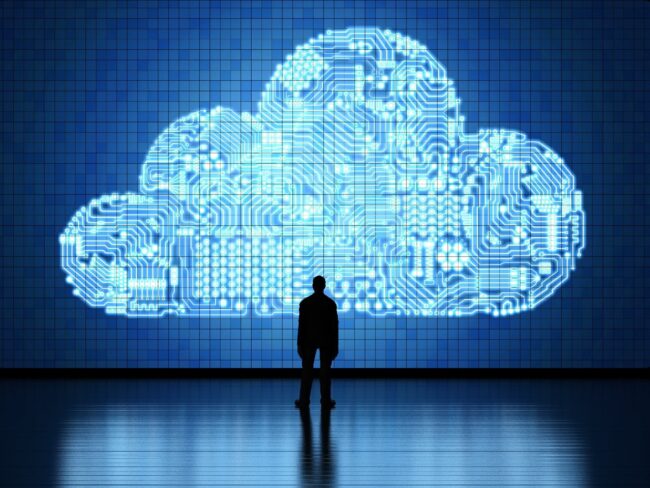David Ohnstad is at the forefront of the ongoing debate between edge computing and cloud computing, a discussion that has captivated the tech industry as it looks toward the future. As businesses strive to improve efficiency, reduce latency, and leverage the power of data, understanding the strengths and limitations of these two computing paradigms is crucial. Both edge and cloud computing have their unique advantages, and each plays a significant role in the evolving technological landscape. However, the question remains: which one will ultimately dominate the tech landscape in the coming years?
Understanding Cloud Computing
Cloud computing has been the backbone of digital transformation for the past decade. By allowing businesses to store and process data in centralized data centers, cloud computing offers unparalleled scalability, flexibility, and cost-efficiency. Companies can access vast computational resources on-demand, without the need to invest in expensive hardware infrastructure. This has led to widespread adoption across industries, from startups to global enterprises.
The major cloud providers—Amazon Web Services (AWS), Microsoft Azure, and Google Cloud Platform—have built extensive networks of data centers around the world, enabling businesses to deploy applications and services with global reach. The ability to scale resources up or down based on demand has made cloud computing the go-to solution for companies seeking agility and innovation.
However, despite its many advantages, cloud computing is not without its challenges. Latency, bandwidth limitations, and the centralized nature of cloud infrastructure can create bottlenecks, particularly for applications requiring real-time data processing. This is where edge computing comes into play.
The Emergence of Edge Computing
David Ohnstad and other industry experts recognize that edge computing is gaining traction as a solution to the limitations of cloud computing. Edge computing involves processing data closer to the source of data generation, such as IoT devices, sensors, or local servers, rather than relying solely on distant cloud data centers. By bringing computation and data storage closer to the user, edge computing reduces latency and enables faster decision-making.
One of the key benefits of edge computing is its ability to support real-time applications. In industries such as healthcare, autonomous vehicles, and industrial automation, milliseconds matter. Edge computing allows these applications to function with minimal latency, ensuring that critical data is processed and acted upon almost instantaneously.
Moreover, edge computing reduces the strain on network bandwidth by processing data locally. This is particularly important as the number of connected devices continues to grow, leading to an exponential increase in data generation. By filtering and processing data at the edge, only relevant information is sent to the cloud, optimizing bandwidth usage and reducing costs.
Edge vs. Cloud: A Complementary Relationship
While the debate between edge and cloud computing often positions them as competitors, the reality is more nuanced. David Ohnstad points out that the future of computing likely involves a hybrid approach that leverages the strengths of both paradigms. Edge computing and cloud computing are not mutually exclusive; instead, they can work together to create more efficient and resilient systems.
For instance, edge computing can handle real-time data processing and decision-making, while cloud computing provides centralized storage, analytics, and machine learning capabilities. This hybrid model allows businesses to take advantage of the best of both worlds: the low-latency performance of edge computing and the vast computational power of the cloud.
One practical example of this hybrid approach is in the realm of autonomous vehicles. These vehicles generate massive amounts of data from sensors and cameras, which need to be processed in real-time to ensure safe navigation. Edge computing enables this real-time processing, while the cloud can be used to store and analyze historical data, improving the vehicle’s performance over time.
Challenges and Considerations
Despite its potential, edge computing is not without challenges. One of the primary concerns is security. With data being processed at multiple edge locations, the attack surface for cyber threats increases. Ensuring that data remains secure as it moves between the edge and the cloud is a critical challenge that businesses must address.
Additionally, edge computing requires significant investment in infrastructure, including edge servers, gateways, and networking equipment. For some organizations, particularly smaller businesses, this investment may be a barrier to adoption. However, as the technology matures and costs decrease, edge computing is expected to become more accessible.
David Ohnstad also highlights the importance of standardization in the edge computing space. Currently, the lack of standardized protocols and frameworks can create interoperability issues, making it difficult for businesses to integrate edge computing into their existing systems seamlessly. Industry collaboration and the development of common standards will be key to overcoming these challenges.
The Future of Computing: Edge, Cloud, or Both?
As we look to the future, the question of whether edge computing or cloud computing will dominate the tech landscape remains open. David Ohnstad believes that both will play crucial roles, with the choice between them depending on the specific needs of the application or industry.
For latency-sensitive, real-time applications, edge computing will likely take the lead. On the other hand, for tasks requiring large-scale data processing, storage, and analytics, cloud computing will continue to be the preferred option. The true power of these technologies lies in their ability to complement each other, creating a more flexible and efficient computing environment.
The future of computing is not a matter of choosing between edge and cloud but rather understanding how to integrate them effectively. David Ohnstad’s insights suggest that a hybrid approach, combining the strengths of both, will be key to driving innovation and meeting the demands of the digital age.
